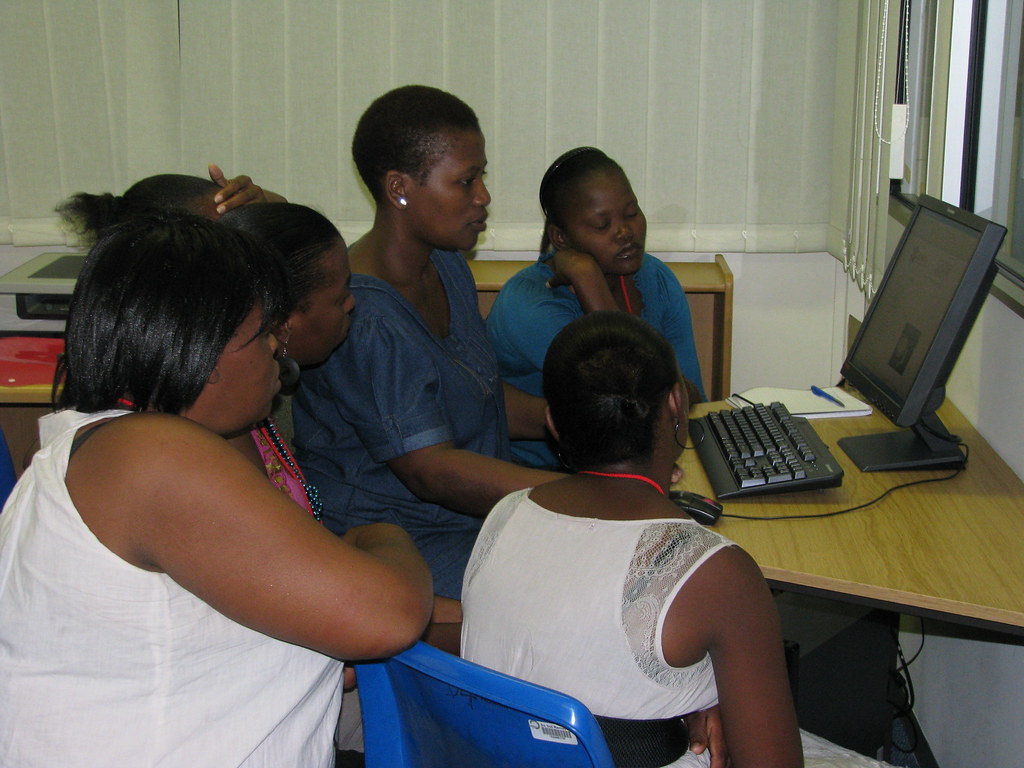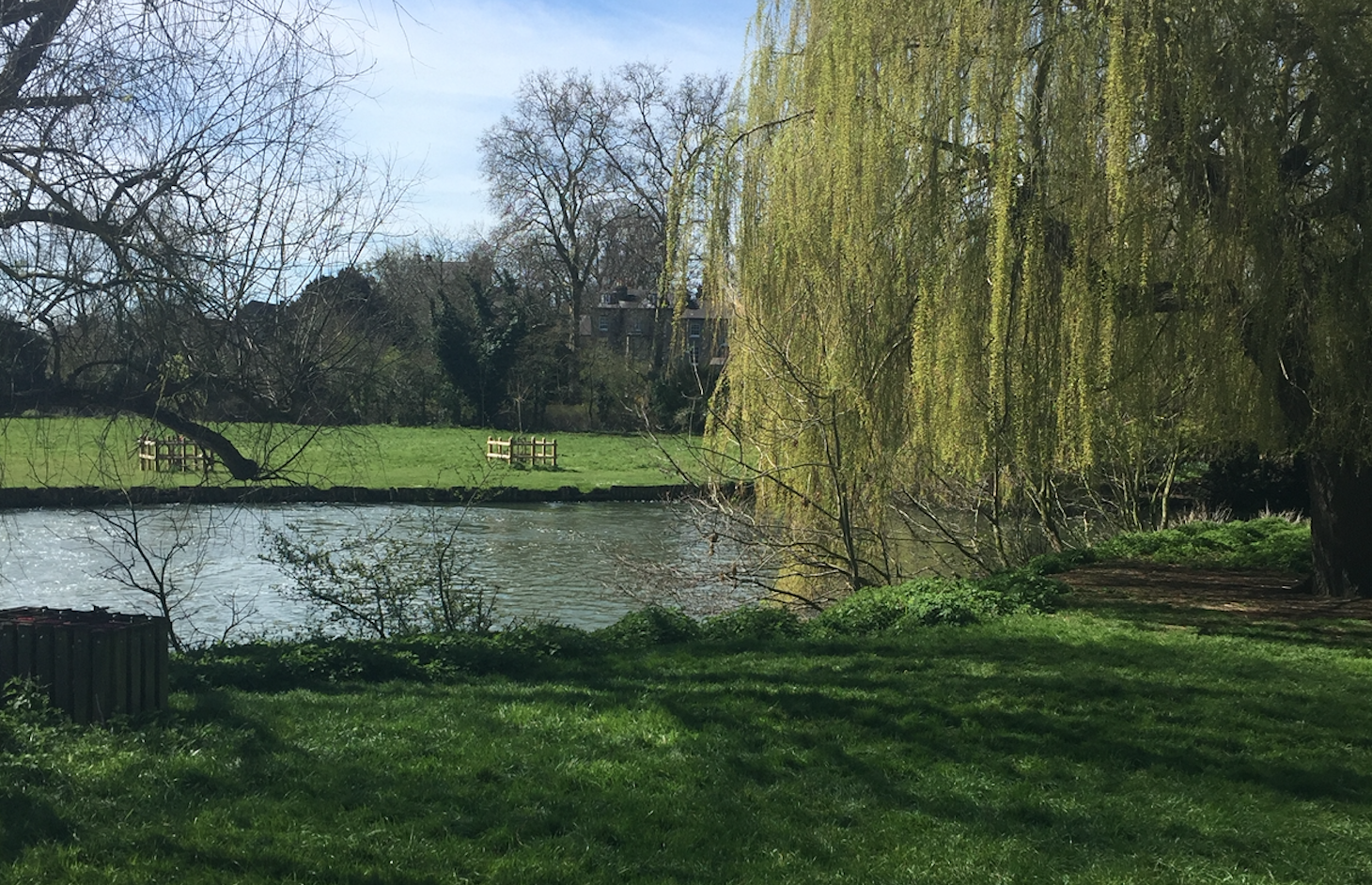Help us protect the commons. Make a tax deductible gift to fund our work. Donate today!
In March we hosted the second Institute for Open Leadership, and in our summary of the event we mentioned that the Institute fellows would be taking turns to write about their open policy projects.
By way of some background, I am currently the digital publishing manager at the African branch of Cambridge University Press (CUP), the publishing business of the University of Cambridge. Prior to joining CUP, I worked as a consultant conceptualising and implementing innovative digital solutions for academic and local government initiatives in South Africa. During this period I launched The Ulwazi Programme with collaborators from the eThekwini Municipality. This collaborative digital library project collated user-generated, local-language, indigenous knowledge content and published it openly under a Creative Commons license. Based on this experience, as well as my desire to explore how a traditional publishing business could engage with with the open movement and the plethora of freely-available content online, I applied to attend the Institute of Open Leadership (IOL) workshops. The week-long sessions were intense; a bootcamp in open licensing and open education. More importantly, the workshop brought together some of the top minds currently working on open ideas. In formal and informal discussions, these mentors shared their thinking with me on open business models, providing examples of successful and sustainable open initiatives.
 Mabusi Kgwete from the Ulwazi Programme training volunteer fieldworkers on how to use the MediaWiki platform. Photo by Niall McNulty, CC-BY
Mabusi Kgwete from the Ulwazi Programme training volunteer fieldworkers on how to use the MediaWiki platform. Photo by Niall McNulty, CC-BY
Understanding rights, and why they matter now more than ever
Everyone who spends time online is now a producer of content. It’s how the digital world works. And this content is multifaceted too. It could be the blog posts you write, photographs you take and share, research articles you publish, videos you upload – the list goes on and on. Fortunately ,as the producer of the content, you get to decide how to license it. You can retain copyright (current standard and in most cases automatically assigned); you can decide to use a Creative Commons license and retain some rights; or you can release the content into the public domain, relinquishing all rights.
One of the direct outcomes of attending the IOL workshops was to critically examine my personal content output, and how I had licensed it. I have a Flickr account, where I have uploaded several hundred photographs, as well as a personal blog where I write about education and technology. Both were licensed using Creative Commons, but with noncommercial and sharealike restrictions. I’ve realised that these licenses, while open, did not allow the adaptation and re-use I believe in, especially when it comes to the potential for innovation and new creations. I also realised that I had chosen them out of a misplaced fear that someone might benefit commercially from using the content I’ve created. Logically I know this fear is largely unfounded and any commercial benefit will be because they have spent time and effort developing this content further. Based on this realisation, I have now changed the licensing on all my online output to CC-BY, allowing for both adaptation and commercial use. Let’s see what happens 🙂
 A lotus flower blooming in the Durban Botanic Gardenes – now available for re-use and remixing. Photo by Niall McNulty, CC-BY
A lotus flower blooming in the Durban Botanic Gardenes – now available for re-use and remixing. Photo by Niall McNulty, CC-BY
Part of my work now, as a member of the IOL group, is to look how open resources can be incorporated into existing product development processes at CUP, building a business case for open through small, successful projects. At the same time, I am interested in the changing role of the publisher – what purpose does it serve when there is an excess of freely available, high-quality content available online?
But first, is Cambridge an open university?
The University of Cambridge states that it “is committed to disseminating its research and scholarship as widely as possible” and supports staff in making their research freely available. There is an open policy in place at the institution, which guides how researchers and staff make content and data available, and a board that oversees this work. The University itself hosts a research repository which includes published articles, conference papers, datasets, theses and video content – basically anything that is considered research output. There are also internal teams available who assist with preparing content and data for open distribution, advise on funding requirements with regard to open access, and provide guidance on sharing datasets.
 Cambridge, United Kingdom. By Niall McNulty, CC-BY. [Cropped from original]
Cambridge, United Kingdom. By Niall McNulty, CC-BY. [Cropped from original]
CUP, as a unit of the University, has an open access publishing division called Cambridge Open, centered on academic journal and book publishing. The principles of Cambridge Open (paraphrased) are:
- Knowledge is for everyone. No one should be denied the discoveries and advances of learning or the ability to contribute to the pool of knowledge – whatever their academic status, means of funding or country of origin.
- CUP has long history and reputation for producing high quality, authoritative content and the Open Access programme develops this further by bringing together a greater diversity of researchers and thinkers, creating a vigorous and fertile exchange of ideas.
They do this by supporting Gold Open Access, where the author or institution pays an article processing charge to be published and the article is then made freely available, as well as Green Open Access, where authors deposit articles or research (submission copies as opposed to final published copies) in institutional repositories. Both these approaches allows authors to comply with funding requirements of many research donors.
Open business models
Sub-Saharan Africa has a vibrant and diverse publishing industry, with local and international players producing content in a number of languages across various genres. Due to market conditions, however, many print books need to be sold at low-price points, e.g. full-colour, senior level textbooks are sold for less than $3 in some countries. At the same time governments and NGOs are constantly looking for ways to make content freely available as budgets for learning and teaching resource material are squeezed. See for example Siyavula, which develops free maths and science textbooks, and ELRU which maintains an open access database of early childhood development resources, both in South Africa. So, my interest lies in what the publisher’s’ role is when content is freely available in the digital environment, how a publisher can engage with and use open resources, how this sits alongside copyrighted content, and what other revenue streams or business models can a publisher embrace to develop sustainable businesses. Paul Stacey, one of our IOL mentors, has written extensively about open business models and how they can generate revenue while contributing to social good (see also the very useful Open Business Model generation tool, adapted by Paul Stacey), and I must thank him for some really interesting conversations we had when he was in Cape Town.
In the past few months I’ve worked on two example projects, outlined below, as well as developing my thinking around a few other potential business models.
Re-using existing content
The first of these involved a recent submission of materials to the Namibian education ministry. The Ministry released a call for submission for curriculum-based content for secondary schools. CUP developed print resources for learners and teachers, as well as an additional digital component. The digital component was originally simply positioned as a value-add, provided freely to teachers who had adopted the CUP course. It included things such as class evaluation tools, rubrics, teaching guidelines, and multimedia content. For the mathematics course, the Namibian authors highlighted the difficulty learners had with certain concepts in algebra and geometry. After some online research, I discovered the 2,600 videos James Sousa had released under a Creative Commons CC-BY license. This license is the most open of the Creative Commons license suite. It permits adaptation, sharing, and repurposing for any use, even commercially, as long as the creator of the work is attributed. The video clips explain mathematical concepts clearly and succinctly, using easy to understand animations. The videos were pitched at the correct level for the Namibian learners and covered the subjects highlighted by the authors as problematic. I contacted James directly to explain how I would like to use his content and to confirm whether he was happy with this. He was, and I agreed to get back to him with any comments from the Namibian teachers. The video clips were selected from those available and mapped to the Namibian curriculum. These were made available on a CD-ROM (Internet connectivity in Namibia is still an issue, precluding online delivery), alongside copyrighted and other licensed content. The open content provided content unavailable from commercial video libraries, allowing us to make the course affordable for Namibian teachers and fulfilling CUP’s mission of disseminating knowledge in the pursuit of education and learning.
A sample of one of James Sousa’s openly-licensed videos.
Adapting content for local context
The second project I am currently developing involves conceptualising and producing an online course for South African teachers on using technology to aid teaching and learning in the classroom. The course will prepare teachers inexperienced with regard to digital tools to effectively use them in the classroom to enhance teaching and learner and fulfil curriculum requirements. Written to the ICT level of teachers in South Africa, the course content will be aware of the particular issues that teachers might experience in their classrooms.
At the suggestion of colleagues from Cambridge University, I made contact with Dr. Sara Hennessy from the Education Department at University of Cambridge. Dr. Hennessy has done extension work in training African teachers to use ICTs in the classroom in Zambia, as part of an ongoing research project (see www.oer4schools.org). Content produced by Dr. Hennessy and her team is available for re-use and adaptation under a Creative Commons license. This content includes professional learning resources for teachers – focusing on interactive pedagogy for teaching with ICTs – and consists of videos, images, lesson and activity plans and templates.
Although contextualised mainly for Zambian teachers, the content is largely appropriate for the South African environment and can be adapted and rewritten for the local teachers and curriculum requirements. We plan to match (and use) appropriate content from the OER4Schools project and then develop missing modules or components for the course. The course will be made freely available to teachers in South Africa, complying with the original content license of CC-BY-NC.
Introducing digital Open Educational Resources into Zambian schools.
At the same time I have been exploring other open business models that could support the development and distribution of educational content.
Data as a commercial model
We are constantly generating data by using digital tools and platforms. Feedback in education is a two-way process: learners, through feedback, can revise and improve, but teachers benefit equally from getting feedback on learners’ progress. Learning analytics in educational technology make it easy to identify and flag issues and provide learners with responsive, adaptive learning opportunities. Particular kinds of learner data collection have always been used to monitor progress and reward achievement in education, such as the grading systems used around the world. Learning analytics today are being used to track many more elements, such as:
- The time learners spend completing specific online tasks
- How learners engage with educational content both in learning management systems and on social media, e.g. what they access and how long they spend engaging with specific content
In 2011, education theorist George Siemens described how analytics empower educators to make informed changes in education. Educators can understand better ‘how [their] inputs influence or produce outputs.’ When high-quality content is provided freely and openly to learners they generate data through engaging with this content. The data, and its analysis, has value to education ministries, schools and teachers, and can be used as revenue a stream to fund the creation and publishing of open content. This data would need to be anonymised and follow local privacy laws, such as POPI in South Africa. Tech companies such as Facebook and Google have built entire business models out of the commoditisation of data generated by users.
Innovation, pedagogy, and the changing nature of content
The global buzz unleashed by the release of the Pokémon Go game for smartphones in 2016 exemplifies how augmented reality (AR) technology is growing. AR refers to the use of technology (such as smartphones and tablets that have integrated microphones and cameras) to augment or overlay additional digital content to a real-world activity, in real time. Simply put, AR is used to superimpose visual data over real-world backgrounds. As would be expected, the educational possibilities of the technology are innumerable. In 2015, for example, CUP made use of AR when they released the ‘Cambridge Experience’ app for iOS devices. Cambridge designed this AR app to ‘bring classroom materials to life’ and so when users point their smartphones or tablets at the companion posters, course books and other learning materials, additional information such as fact pop ups, educational videos or illustrative photography is displayed on-screen. This functionality adds value to the physical products and makes it possible for educators to give learners a more interactive, novel learning experiences.
In terms of further possibilities in this field, UK-based magazine Education Technology identified applications such as:
- Enhancing static content such as posters with helpful facts and newer insights
- Helping learners to visualize complex problems such as maths equations
- Making abstract concepts easier to understand via animated visualizations
In this scenario, the core content is made available freely to the learner but additional resources that complement the open resource or extends the learner, such as AR data or additional assessment, is available as a premium.
Conclusion
While still in the early phases of my thinking and experimentation around open business models and the relationship to education and publishing, it does seem that opportunities exist to explore new revenue streams that can embrace and re-use open content while at the same time providing sound pedagogic solutions to learners in sub-Saharan Africa that are innovative and of a high-standard. I am interested in developing these ideas further and encourage interested readers to leave comments below or contact me at niallmcnulty.com.
Thanks to my mentor Kelsey Wiens (Creative Commons South Africa Lead) for assistance in developing these ideas and guidance in the IOL process.
Posted 03 August 2016